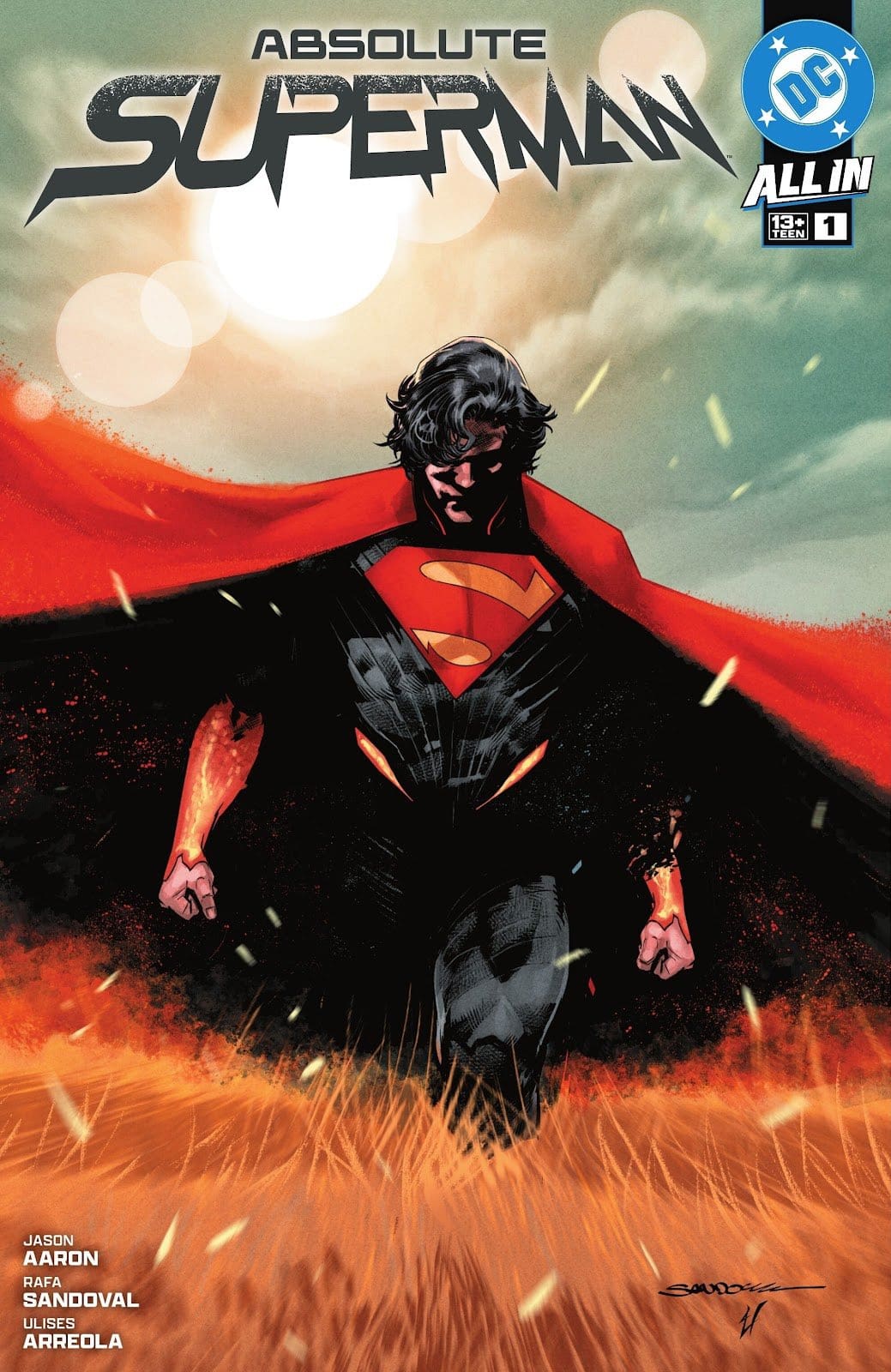
Synopsis
Without the fortress…without the family…without a home…what’s left is the Absolute Man of Steel!
Review
Absolute Superman #1 completes the trinity of DC’s bold new initiative this fall, presenting their classic characters like Batman and Wonder Woman without the burden of continuity. This is the book I’ve been most uncertain about.
Whereas Batman is elastic enough to take on many different interpretations, Superman has been a battleground for the last decade over who he is, thanks to the Zach Snyder movies, which at the outset confused him for a grimdark Objectivist (no, you shouldn’t let schoolbuses full of kids drown). The idea of a ‘dark Superman’ in the Absolute universe worried me.
Written by Jason Aaron, responsible for the epic Thor runs that saw Jane Foster take over the mantle of the God of Thunder, Absolute Superman #1 is not nearly as interested in darkness as early previews or its peer books might have suggested. It is grounded in a way that is very different for the character. Aaron invests heavily in centering the Man of Steel as a man of the people, much as Scott Snyder’s Absolute Batman does. Here, the iconic S symbol is shown to be a class marker representing Kryptonians who are laborers. Both Jor-El and Lara-El are workers as opposed to scientists; they were both excommunicated from the science classes for prescient warnings about overworking Krypton’s environment.

There’s even a league of Middle Management, which is maybe taking things too far, but it’s part of depicting a Krypton that values status and bureaucracy over people. When we catch up with an adult Superman on Earth, we meet him standing up for exploited miners in South America. He does the hard work of harvesting diamonds for them, and eventually fights Peacemakers (all super-teched up versions of the main DC Comics character) to save them from further oppression.
The battle presents the clearest departure from Superman lore. He wears living armor which regulates his solar powers and is operated by what appears to be a sentient AI named Sol. Sol is a voice of reason, or at least practicality, going so far as to warn Kal-El against standing up for the miners at all. This part of the comic felt the most Synder-ish to me, and the most wildly different from traditional Superman lore, but Aaron is clearly establishing a debate about heroism and responsibility. Superman has always been a paragon of virtue, so to even introduce the question of his commitment to helping people induces some mild concern. That said, this is resolutely a Superman devoted to helping people who need help.
The divergence between this Superman and others gets wider when we discover that Lois Lane is a soldier and not a reporter. This development occurs late in the issue and begs only questions, and one is the same as you’d ask with the other Absolute entries: why isn’t this a different character? It’s a fair question when you’re changing so much. Time will tell.

Artist Rafa Sandoval depicts a grittier Krypton and Superman for sure, with dark lines that create a sense of foreboding. Krypton is beautiful but doomed. Superman is recognizable but strange. The upside-down quality of the Absolute universe is the point, and your mileage will vary on whether it works.
This to me is the least impactful of the three initial books, but not because of preconceived notions on my part. It’s as compelling and bold as the other two are but lacks their kinetic power. Few comics have been as ambitious with upsetting the status quo as Absolute Wonder Woman, and there have been very different takes on Superman before, whether it’s Red Son or the dark vision Frank Miller wrought in The Dark Knight Returns.
This first issue gives a very different take on Superman that simultaneously leans heavily on its scifi roots and modern societal concerns. It’s very well done and definitely has me awaiting the next issue to see how this plays out.







Leave a Reply